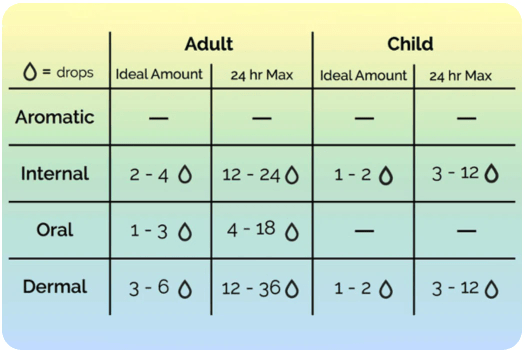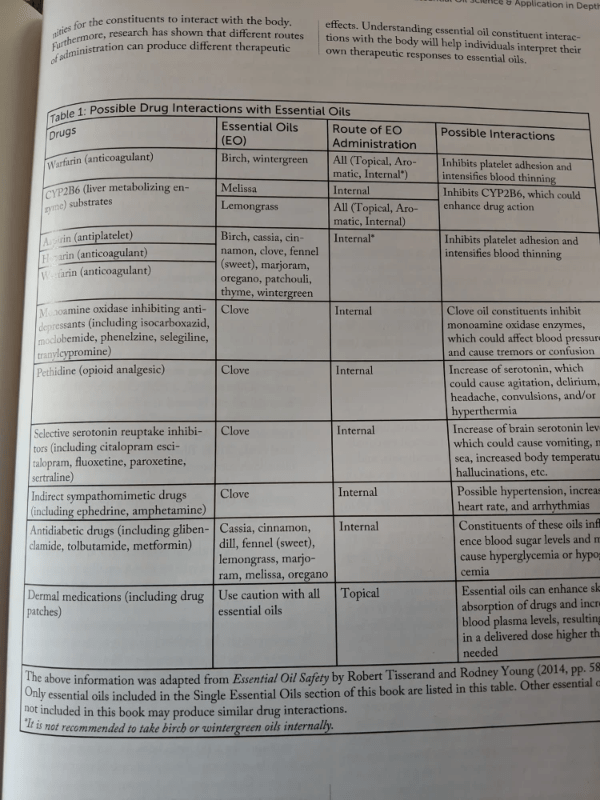
- Login
- …
- …
Day #2
How to use Essential Oils, Purity and Safety Tips
HOW DO I USE ESSENTIAL OILS?
AROMATIC
• Essential Oils, when diffused or inhaled, can be very stimulating, calming, or soothing. Diffusing Essential Oils can also cleanse and purify the air.If you are using a water-based diffuser, it is generally recommended to use one to five drops of oil per diffusion period. It would be best to start with short diffusion periods (15–20 minutes) and then increase the time as needed to achieve the desired benefits.
TOPICAL
• Essential Oils can be safely applied for massage or topical therapy.
• Chemical structure enables them to pass through skin for an immediate systemic response.
THIRTY SECONDS to get into your bloodstream - THIRTY MINUTES to get through your entire body.There are two terms you will want to know when applying your Essential Oils topically: “DILUTION” and “NEAT.”
“NEAT” refers to application of an Essential Oil straight from the bottle and without dilution. Oils classified as NEAT can be applied topically without dilution because of their exceptionally mild chemistry. These oils would include Frankincense, Lavender, Melaleuca, Melissa, and Sandalwood.
“DILUTION” is a process in which Essential Oils are mixed with a CARRIER OIL (such as Fractionated Coconut Oil) that helps carry the Essential Oil onto the skin. There are many benefits to diluting Essential Oils. Dilution is one of the MOST IMPORTANT aspects of effective topical application; it is also one of the most misunderstood. When used properly, carrier oils have been shown to improve Essential Oil topical application through several different pathways.
Evaporation is the primary issue in topical application, as body heat and the skin present a formidable barrier. One of the most important benefits of dilution is that it slows the “flash off” of the volatile aromatic compounds. This means that the amount of Essential Oil that you lose to the air is minimized and the rate of evaporation is reduced. Diluting has also been shown to pass through your skin more efficiently than when you apply an Essential Oil neat. Diluting Essential Oils can also reduce the risk of sensitivity. It is advisable to use a carrier oil to dilute more potent oils, and when trying an oil for the first time. The recommend dilution ratio is typically one drop of Essential Oil to three drops of carrier oil. Some of the more popular carrier oils include coconut oil, almond oil, jojoba oil, grape seed oil, and avocado oil. I like to use Fractionated Coconut Oil as it is odorless.
To ensure you are using Essential Oils properly with children, follow the dilution guidelines listed below:
• Newborn to six months: one drop Essential Oil in four tsp. of carrier oil.
• Six months to two years: one drop Essential Oil in two tsp. of carrier oil.
• Two to five years: one drop Essential Oil in one tsp. of carrier oil.
• Five to ten years: one to two drops Essential Oil in one tsp. of carrier oil.
• Ten to eighteen years: one to five drops Essential Oil in one tsp. of carrier oil.With each use of Essential oils on a child, stay within one to two drops every four hours as an ideal amount, with three to twelve drops in a 24-hour period as a guideline to maximum topical application.
For adults, dilute as needed, using three to six drops per use as the ideal amount, with a maximum of 12 to 36 drops per 24-hour period.
For those with sensitive skin, or fragile skin (such as the elderly), use the guidelines for a child to start, and adjust from there.
Some Essential Oils are considered to be 'hot' oils, since they have a potent chemistry, and should always be diluted when applying topically. Typical 'hot' oils include Cassia, Cinnamon, Oregano, Thyme, Clove, White Fir. However, some adults (like myself) can apply these without deleting on the bottoms of my feet with no adverse reactions. I recommend testing the use of any oil first.
Although sensitivity reactions are rare, it is recommended to conduct a simple skin test before beginning topical use of a new Essential Oil. You can do this by mixing a small amount of Essential Oil (one to two drops) with three to six drops of a carrier oil that you have previously used successfully. Apply this to an area of skin (such as the abdomen, thigh, or inner arm). Allow the Essential Oil to absorb completely, and check the area multiple times over the next several hours. If any redness, pain, itchiness, swelling, or other adverse symptoms result, you may have a sensitivity to that oil. It would be best to avoid topical use of this oil in the future.
POSSIBLE PHOTSENSITIVITY ISSUES
Photosensitization is the process in which ultraviolet (UV) radiation combines with a particular substance and causes chemical or biological changes. CITRUS Essential Oils contain a photosensitive compound called furocoumarins. It is important to avoid exposure to sunlight, sunlamps, or other sources of UV light for up to 12 hours after TOPICAL application of these oils. I have never had an issue, but it is something to be aware of.SENSITIVE AREAS TO BE AVOIDED
• Some facial areas, such as the skin around the eyes.
• Eyes and inner ears.
• Inside the nose.
• Broken, damaged, or otherwise injured skin.If the reaction occurs in the eye, immediately rinse the eye with vegetable oil such as Fractionated Coconut Oil. If no vegetable oil is available, fat-containing milk (not skim milk) is a great alternative. Because Essential Oils are not water soluble, water will not be as effective at removing the Essential Oil as a lipid-containing substance. The eye should be flushed multiple times until irritation ceases. Then, seek medical attention from a trained professional to ensure no long-term damage occurred.
INTERNAL
• Many Essential Oils can be ingested. Certain Essential Oils have a rich culinary history and can be used as dietary supplements for targeted wellness.When ingested, Essential Oils directly enter the blood stream via the gastrointestinal tract, where they are transported throughout the rest of the body. Essential Oils are lipid soluble so they are readily transported to all organs of the body, including the brain. Then, like all things we consume, Essential Oils are metabolized by the liver and other organs and are then excreted.
The composition of Essential Oils is highly complex. Each constituent possesses a unique set of biochemical properties that react with cells and organs in different ways. Although these mechanisms of action are not completely understood, the positive end results have been demonstrated.
However, the body is only equipped to handle appropriate doses of Essential Oils.
Proper dosing according to labeling recommendations and other professional guidelines should be strictly followed to avoid toxicity. It is important to know that you are using pure Essential Oils with no additives or fillers.
For children, use one to two drops per use every four hours for the ideal amount, with three to twelve drops being the maximum amount in a 24-hour period.
For adults, use two to four drops per use every four hours for the ideal amount, with 12 to 24 drops being the maximum amount in a 24-hour period.
Next, we need to give some attention to the topic of whether to use GLASS or PLASTIC when STORING or DRINKING our Essential Oils.
Many varieties of plastic are available, and some are more impervious to Essential Oils than others. However, not all plastics are equally fragile, and not all Essential Oils affect plastic the same way.
CITRUS Essential Oils have a chemical composition that is known to interfere with the chemistry of plastics. Consider using glass only.
Characteristically, HDPE plastic, as well as plastics number 1 (PETE) and 2 are safe for use with Essential Oils.
You will know if there is an incompatibility with your container if it changes color, or shape, or begins to leak. This may take around 24 hours to occur.
When in doubt, use glass. Another available option would be to use a stainless-steel container that is not lined in any way (such as with an epoxy; this usually applies to aluminum).
If you are on any prescription medications, you should review with your physician any Essential Oil properties that may interact or reduce the efficacy of the medication.
HOW MUCH TO USE?
New oil users tend to fall into one of two groups with respect to how they are using their oils.
- The “More is Better” group. These people think that if a little is good, a LOT must be better! Rather than using 1 or 2 drops, they use 10 or 12! Remember, essential oils are really powerful and a little bit goes a long way.
- The “Barely-Make-A-Dent-In-The-Bottle-After-6-Months” group. These people are either overly-cautious or overly-frugal, but either way they’re not getting results! If you want to experience the benefits you’re expecting to get from your oils, you have to use enough (or use them OFTEN enough) to allow them to work!
To help each of these groups find the happy medium where essential oils are both safe AND effective, Dr. Hill shared these usage guidelines regarding HOW MUCH essential oil to use.
Keep in mind, these guidelines are intended as a starting point for individuals using essential oils for the first time. Many people use more drops per day than this with no unwanted effects, but as you begin using oils this will help guide your usage so that you’re not swinging too far into either of the groups we just talked about.
QUANTITY OF APPLICATIONS IS MORE EFFECTIVE THAN QUANTITY APPLIED!!

Is Purity Important?
When you see doTERRA's label, you can be confident that you are using a pure quality Essential Oil with the highest standards and rigorous testing. This ensures that your bottle of Essential Oil contains no fillers, additives, or synthetics. Synthetics, especially when unknown, can cause adverse reactions and complications for the user. doTERRA has also gone above and beyond by developing a website where you can enter the batch number on the bottom of your Essential Oil bottle and see the results from the testing for yourself.

Day #2 Discussion and Daily Challenge
Is purity important to you? Even if it is at a higher cost? How do you see yourself using Essential Oils? Do you have any concerns with using them? Please comment below.
Challenge: Research any medications you may be on to see if there would be possible interactions. I have attached a reference guide from the Modern Essentials book. Please note that you did this and results (without disclosing personal info).

- Join the Discussion
Sherry Oils © 2025
| Designed By practicalwebsitedesign.com |
Thank you Casey Clark Photography!
Please note - The statements found throughout this website have not been evaluated by the Food and Drug Administration. The products mentioned are not intended to diagnose, treat, cure, or prevent any disease.



